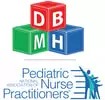Developmental Delay: Social and Cognitive
Cognitive, Social Criteria
- For the first 2 years of life, cognitive development is less obvious than the other domains of gross motor, fine motor, and language.
- Clues to a child’s cognitive development is dependent on their interactions within their environment.
- Hearing and vision must be intact to allow for sensory exploration and discovery. Additionally, motor deficits can limit the child’s sensory exploration as well.
-
Social engagement encourages environmental interaction.
Assessment & Screening
- During each visit, the health care provider should observe the child’s play activities with toys, hands and feet. There is a normal progression of cognitive milestones that are expected throughout growth periods of infancy, toddlerhood, preschool, school age and adolescence.
- In healthy children, social and emotional development progresses in predictable stages. The health care provider should observe this aspect of development at every visit and compare to expected norms.
- When assessing social and emotional development, the health care provider should consider the context of the behavior, setting/time, age of the child, health status of the child, and family/cultural considerations.
- The following are examples of screening and assessment tools:
Pediatric Symptom Checklist 4-18 years (5 minutes)
Articles
Resources
|
Organizations
Organizations
|
